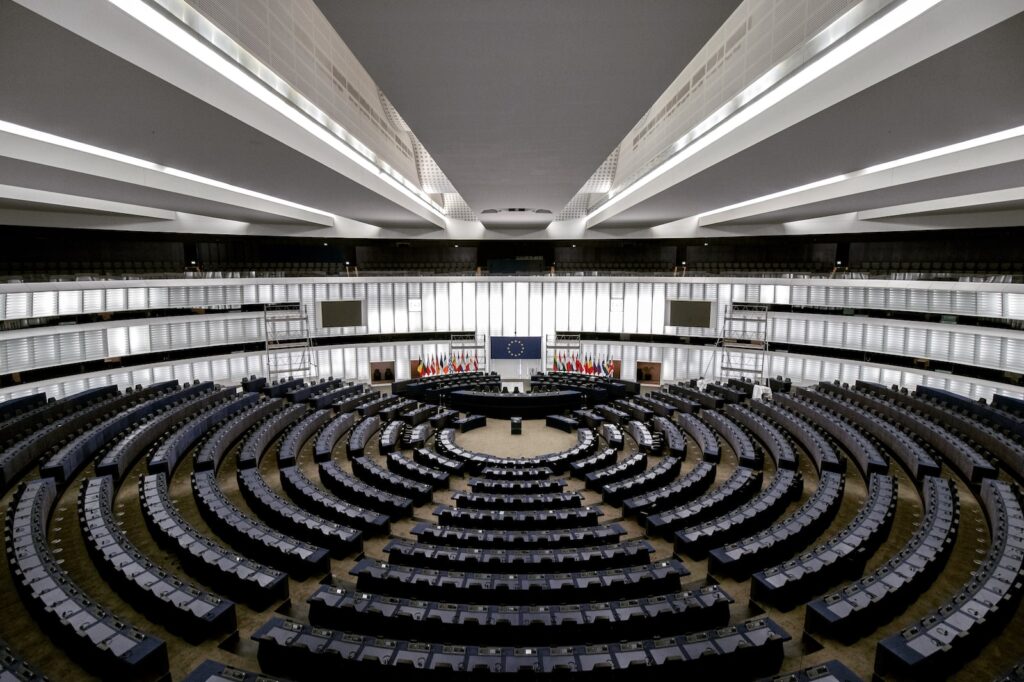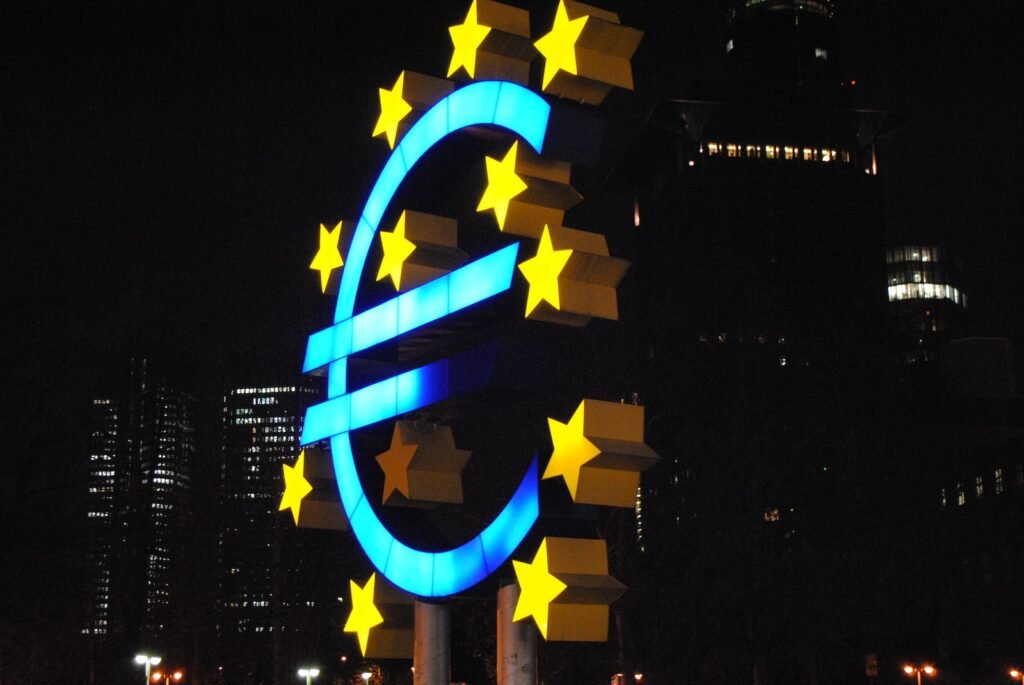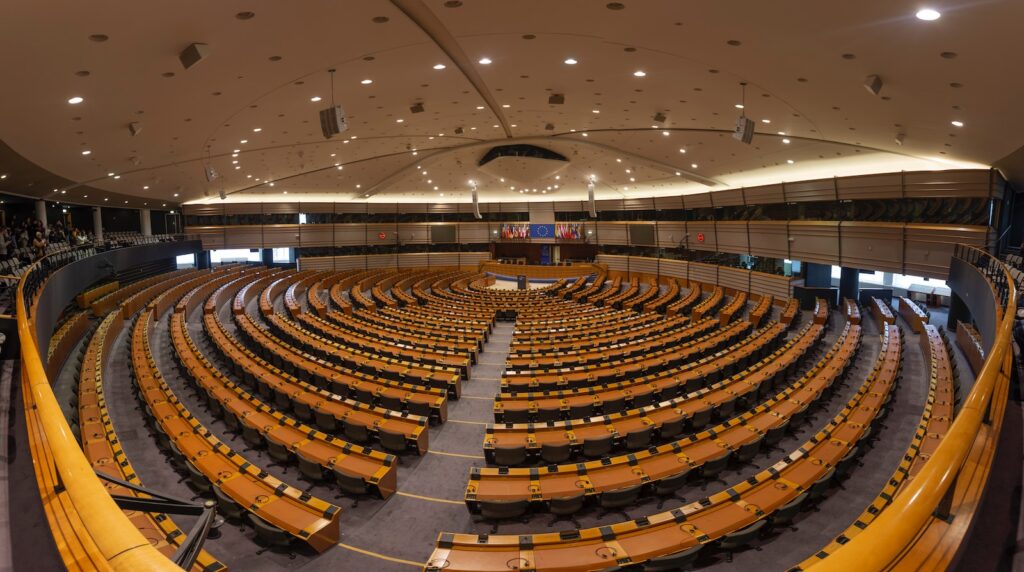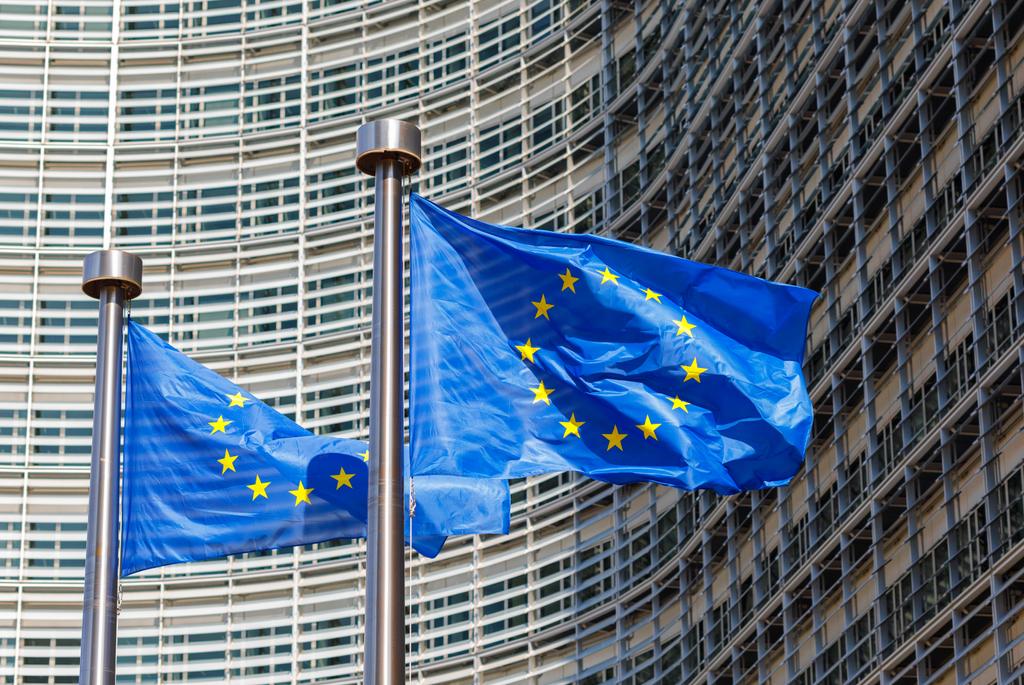Introduction
The European Union (EU) is a unique political and economic union of 27 member states located primarily in Europe. Coming together in the wake of two devastating World Wars, these nations made a commitment to work together for peace, prosperity, and stability.
The EU represents a profound commitment to multilateralism and cooperation, with member states pooling sovereignty in certain areas to achieve common goals.
The European Union is more than just an international organization. It’s a union of countries that have agreed to closely work together to ensure peace and prosperity not just within their borders, but throughout the continent.
It is, in essence, a bold experiment in regional cooperation and integration, and its influence extends beyond Europe, shaping global norms, standards, and policies.
The EU has its roots in the European Coal and Steel Community, which was founded by six European countries in 1951. The aim was to prevent another devastating war in Europe by making its countries economically interdependent.
The idea was that countries that depend on each other economically would be less likely to go to war. Since that time, the EU has grown and evolved, expanding its membership and its areas of competency.
The European Union’s history is a testament to the triumph of cooperation over conflict. It also highlights the challenges inherent in balancing national sovereignty with the benefits that come from pooling resources and working together.
This balance is reflected in the EU’s complex structure, which includes an array of institutions designed to preserve national interests while facilitating cooperation.
The purpose of the European Union is multifaceted, ranging from the creation of a single market, to the promotion of peace, security, and human rights, and the development of common policies in areas like agriculture, fisheries, and regional development.
This has led to a complex institutional structure, involving multiple branches with different roles and responsibilities.
In the following sections, we will delve into the structure of the European Union, its functions, and its membership. We will also examine the controversies that surround it.
Despite its many achievements, the EU is not without its critics and has faced numerous challenges over the years. This journey into the heart of the European Union will provide a comprehensive understanding of this unique union of nations.
Structure of the European Union

The European Union (EU) functions on the basis of a complex yet efficient structure, designed to ensure that decisions made are representative of the collective interests of the member states.
This intricate structure is made up of seven primary institutions: the European Council, the Council of the European Union, the European Commission, the Court of Justice of the European Union, the European Central Bank, the Court of Auditors, and the European Parliament.
The European Council sets the EU’s overall political direction and priorities but does not pass laws. It consists of the heads of state or government of the member countries, alongside the President of the European Council and the President of the European Commission.
The Council of the European Union, on the other hand, represents the governments of the individual member countries. Its presidency is shared by the member states on a rotating basis.
The European Commission is essentially the EU’s executive arm. It is responsible for proposing legislation, implementing decisions, upholding the EU treaties, and the day-to-day running of the EU. The Commission is made up of 27 Commissioners, one from each EU country. Each Commissioner is assigned responsibility for specific policy areas.
The Court of Justice of the European Union ensures that EU law is interpreted and applied in the same way in every EU country, ensuring that it is equal and just. The European Central Bank is responsible for European monetary policy and the euro, the EU’s currency. The Court of Auditors checks the financing of the EU’s activities.
The European Parliament is the only directly elected institution. It represents the people of the EU, acting as a co-legislator, sharing the power to adopt and revise EU laws with the Council of the European Union. It consists of Members of the European Parliament (MEPs) who are elected every five years by voters across the 27 Member States.
Each of these branches plays a vital role in the functioning of the EU. They emphasise the balance between national sovereignty and a shared decision-making process.
The importance of these different branches cannot be understated for they ensure that EU actions and legislation are carried out democratically, with respect for the rule of law, and in the interests of all its citizens and Member States. It is this intricate structure that allows the EU to deal with a broad range of issues, from economic policy to human rights, in a coordinated and effective manner.
Functions of the European Union

The European Union (EU), as an international organization, performs a wide array of functions that impact the continent and beyond, spanning economic, social, and political dimensions. These functions are designed to promote unity, foster prosperity, and ensure peace among its member states.
From an economic perspective, the EU manages a common market, which ensures the free movement of goods, services, capital, and people across member states. This economic integration is reinforced by the use of a common currency, the Euro, in 19 out of the 27 EU countries.
The European Central Bank (ECB) oversees the monetary policy to maintain price stability in the Eurozone. Further, the EU has taken it upon itself to establish and enforce competition laws, preventing monopolies and encouraging competition, which in turn fuels innovation and consumer choice.
The EU’s social functions aim at improving the quality of life for its citizens. One of the notable ways it does this is by implementing policies to protect and promote human rights, equality, and social inclusion.
Additionally, the EU has instituted programs that support education, training, youth, and sport in Europe, such as the Erasmus+ program which provides opportunities for over 4 million Europeans to study, train, gain experience, and volunteer abroad.
Politically, the EU functions as a platform for diplomatic dialogue and consensus-building among its member states. It coordinates common foreign and security policies, allowing the EU to speak with one voice on the international stage.
This function is not just limited to defense, peacekeeping, and conflict prevention, but extends to issues like climate change, human rights, and development cooperation. Additionally, the EU also has a role in justice and home affairs, including collaboration in policing and judicial matters, migration and asylum policies, and efforts to prevent and combat terrorism.
Another key function of the EU is to establish and enforce laws in many areas, including environmental protection, health and safety, and consumer rights. These laws not only ensure the well-being of citizens and the environment but also contribute to a level playing field for businesses operating in the EU.
Lastly, the EU runs several funding programs that invest in various sectors such as agriculture, fisheries, regional development, research, and innovation.
These programs aim to ensure sustainable development, boost economic growth, and create jobs. In essence, the functions of the European Union are multifaceted, firmly intertwined with the everyday lives of its citizens, and crucial in shaping the future of the continent.
Membership of the European Union

Membership within the European Union (EU) is a significant commitment that requires strict adherence to a host of rules and regulations. The eligibility for membership is governed by the Copenhagen criteria, established by the European Council in 1993.
The criteria require that candidate countries have stable institutions that safeguard democracy, the rule of law, human rights, and respect for and protection of minorities. They also require the existence of a functioning market economy and the ability to cope with competitive pressures and market forces within the Union.
In addition, potential members must be able to take on and implement effectively the obligations of membership, including adherence to the aims of political, economic, and monetary union. In essence, the country must be economically and politically stable, respecting the EU’s democratic values and its ability to adopt EU laws.
The benefits of membership are myriad and significant. Member countries have access to the world’s largest single market, with over 500 million consumers. They also have a say in the policies and direction of the EU, influencing decisions that can have wide-ranging effects on their economies and societies.
Members can freely move goods, services, capital, and people within the internal market, enhancing business opportunities and consumer choices. This freedom of movement also extends to citizens, who can live, work, study, or retire in any EU country.
On the flip side, membership also comes with its own set of obligations and responsibilities. Members must contribute to the EU budget, comply with EU laws and regulations, and partake in decision-making processes. These requirements, while sometimes contentious, are essential for the smooth operation of the EU and the realization of its goals.
The current roster of EU membership includes 27 countries, which span from the northern reaches of Scandinavia to the southern Mediterranean and from the Atlantic Ocean to the borders of Russia. Each of these countries contributes to the diversity and dynamism that defines the European Union.
However, the EU has also witnessed departures. The most notable recent instance is the United Kingdom, which after a prolonged negotiation period, officially left the Union on January 31, 2020, in a move commonly referred to as “Brexit”. This has sparked discussions on the future of the Union and the possibility of other departures.
Additionally, several countries have expressed an interest in joining the EU and are in various stages of the accession process. These candidate countries must meet the stringent criteria for membership, demonstrating their commitment to the EU’s values and regulations.
In conclusion, the membership of the European Union is a dynamic process that requires strict adherence to democratic values, rule of law, and the ability to handle the economic pressures of the Union.
Despite the challenges, the benefits of being part of the world’s largest single market, the ability to influence EU policies, and the freedom of movement for goods and citizens often outweigh the obligations that come with membership.
Member Countries of the European Union

The European Union (EU) is a unique economic and political union of 27 member countries that are primarily located in Europe. The EU was created with the aim of ending the frequent and bloody wars between neighbors, which culminated in the Second World War.
The member nations work together to establish laws applicable throughout the region, promote peace, establish a unified economic framework, and enhance the well-being of its citizens.
The list of the countries currently in the EU is vast and diverse, spanning from west to east and north to south across the European continent.
These include: Austria, Belgium, Bulgaria, Croatia, Republic of Cyprus, Czech Republic, Denmark, Estonia, Finland, France, Germany, Greece, Hungary, Ireland, Italy, Latvia, Lithuania, Luxembourg, Malta, Netherlands, Poland, Portugal, Romania, Slovakia, Slovenia, Spain, and Sweden. Every member country has the right to appoint one member to the European Commission and is also represented in the EU Parliament based on its population size.
The history of the EU has also seen countries opting to leave the union, the most notable being the United Kingdom. The UK’s departure, commonly referred to as Brexit, marked a significant point in the EU’s history and posed various political, economic, and social challenges. Brexit officially took place on 31 January 2020, making the UK the first member state to leave the EU.
Potential EU membership is not limited to the current 27 nations. Certain criteria must be met for a country to be eligible for membership. These include being a stable democracy that respects human rights and the rule of law, having a functioning market economy, and accepting the obligations of membership, including EU law.
Countries that have applied for EU membership are mainly from the Balkans and include Albania, Montenegro, North Macedonia, Serbia, and Turkey. The process of becoming a full-fledged EU member—known as accession—can take many years of negotiation and meeting the EU’s rigorous standards.
The membership within the European Union offers several benefits like access to the single market, which permits free movement of goods, services, and people among member nations. It also allows member countries to have a say in the laws that govern the EU as a whole.
However, membership comes with responsibilities, such as adherence to EU laws and regulations, and the contribution to the EU budget based on the size of the country’s economy.
In conclusion, the European Union encompasses a diverse range of countries from across Europe. Each member country brings something unique to the table, contributing to the overarching richness and dynamism that defines the EU. Meanwhile, the prospect of future expansion adds an exciting dimension to the EU’s ongoing evolution.
Controversies Surrounding the European Union
The European Union, despite its noble intentions and significant achievements, has not been without its share of controversies. These debates and disputes have often been centered around economic, political, and social issues, with varying degrees of intensity and implications.
Economic controversies are among the most pervasive. The Eurozone crisis, which began in 2010, highlighted the weaknesses of a shared currency among nations with varying economic strengths and policy priorities.
Many pointed out the inherent flaws in the Economic and Monetary Union, particularly its lack of fiscal integration. Critics argue that the crisis exposed the EU’s inability to effectively manage a common currency and economic policy, while proponents maintain that it was an inevitable growing pain in the pursuit of more profound integration and that the EU has since taken significant strides to address these issues.
Political controversies have also been a hallmark of EU’s existence. The principle of supranationalism, which underpins the EU, has often been a contentious issue. Critics argue that it erodes national sovereignty, while supporters see it as a necessary mechanism to ensure effective decision-making and enforcement of EU-wide policies.
The Brexit referendum in 2016, which resulted in the UK’s decision to leave the EU, brought these debates to the forefront. It showed a significant section of populations might feel alienated by perceived excessive EU control over national affairs.
The EU’s approach to immigration has also sparked significant controversy. The 2015 migration crisis, where an unprecedented number of refugees sought asylum in Europe, led to heated debates within the bloc.
Some member states argued for a quota system to share the responsibility, while others firmly rejected this idea. The crisis highlighted differing views on the EU’s social responsibilities and how to balance them with national interests.
On a social level, while the European Union has strived for unity and the promotion of shared values, disparities in social policies among member states have led to conflict. Issues such as LGBTQ+ rights, abortion, and drug policies vary widely among member states, often leading to friction within the Union. Critics argue that the EU’s inability to harmonize these policies undermines its claim of shared values and unity.
In conclusion, while the European Union is an ambitious and unprecedented project of regional integration, it is not without its share of controversies. These disputes, often deeply rooted in the tension between national interests and collective action, are intrinsic to the nature of the EU. They are, in many ways, a reflection of the ongoing challenges that come with striving for unity while respecting diversity.
Summary
In summary, the European Union is a unique political and economic union composed of 27 member states primarily located in Europe. The EU was established with the goal of promoting peace, stability, and economic cooperation among European nations in the aftermath of World War II.
Its history is marked by periods of expansion, with the addition of new member states, and significant treaty revisions, aimed at increasing integration and cooperation among member states.
The structure of the European Union is complex, consisting of seven main institutions. These include the European Parliament, the European Council, the Council of the European Union, the European Commission, the Court of Justice of the European Union, the European Central Bank, and the Court of Auditors.
Each institution plays a pivotal role in the legislative processes, judicial oversight, monetary policy, and financial audits within the EU. They work in tandem to uphold the Union’s democratic values and ensure the implementation of its policies.
The functions of the EU are multifaceted, encompassing economic, social, and political aspects. Economically, the EU has developed a single market that allows for the free movement of goods, services, capital, and people among member states.
Socially, it promotes social and economic cohesion, investing in less developed regions and sectors. Politically, it provides a platform for member states to coordinate their policies and speak with a unified voice on the global stage.
Becoming a member of the European Union involves a complex process known as the accession process. To be eligible for membership, countries need to meet the Copenhagen criteria, which includes having a stable democratic government, a functioning market economy, and the ability to implement EU laws and regulations.
The benefits of membership are significant, providing access to the largest single market in the world, but they also come with responsibilities and obligations.
Over the years, the EU has seen its fair share of controversies. Economically, the Eurozone crisis brought to the forefront the issue of economic disparities among member states.
Politically, debates around sovereignty and the EU’s democratic deficit have been contentious. Socially, matters like migration and the free movement of people have been sources of disagreement.
Despite these challenges, the European Union continues to play a crucial role in shaping the political, economic, and social landscape of Europe. Its complex structure and varied functions make it a unique entity on the global stage.
As it continues to evolve in response to internal and external challenges, it embodies the ongoing project of European integration. The EU’s future will undoubtedly be shaped by how it navigates these challenges, and how it continues to uphold its founding values of peace, democracy, and solidarity.

